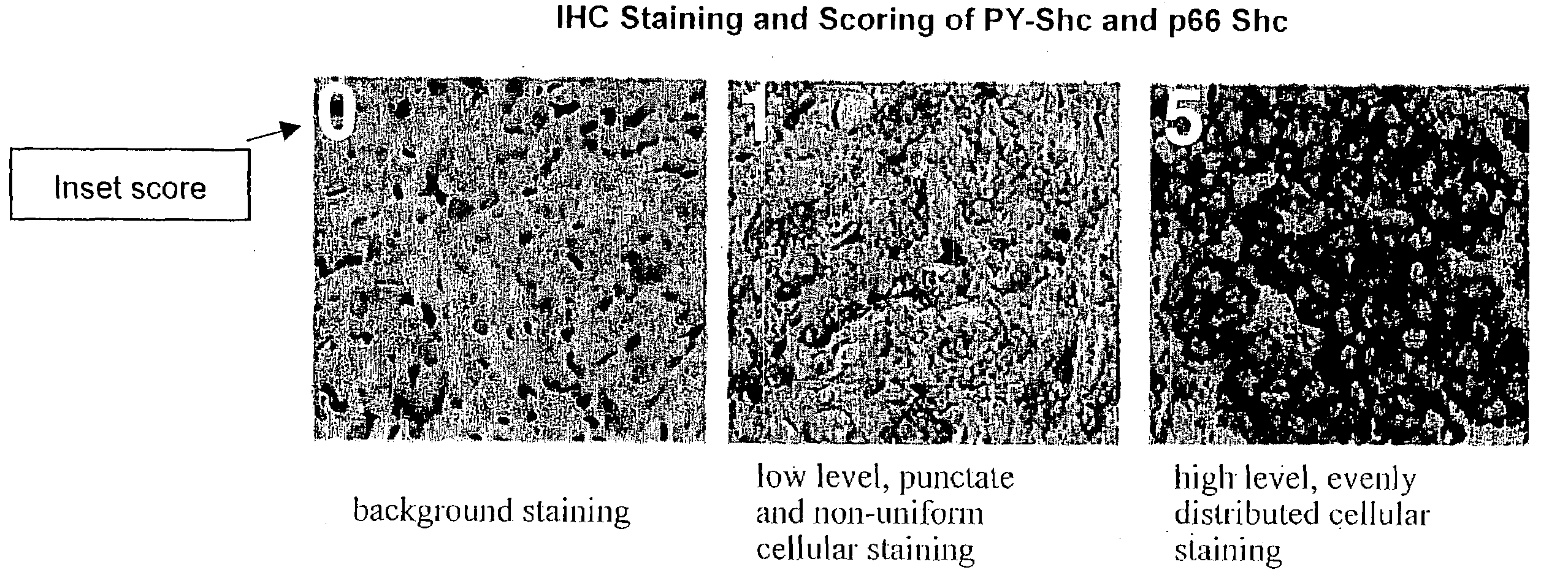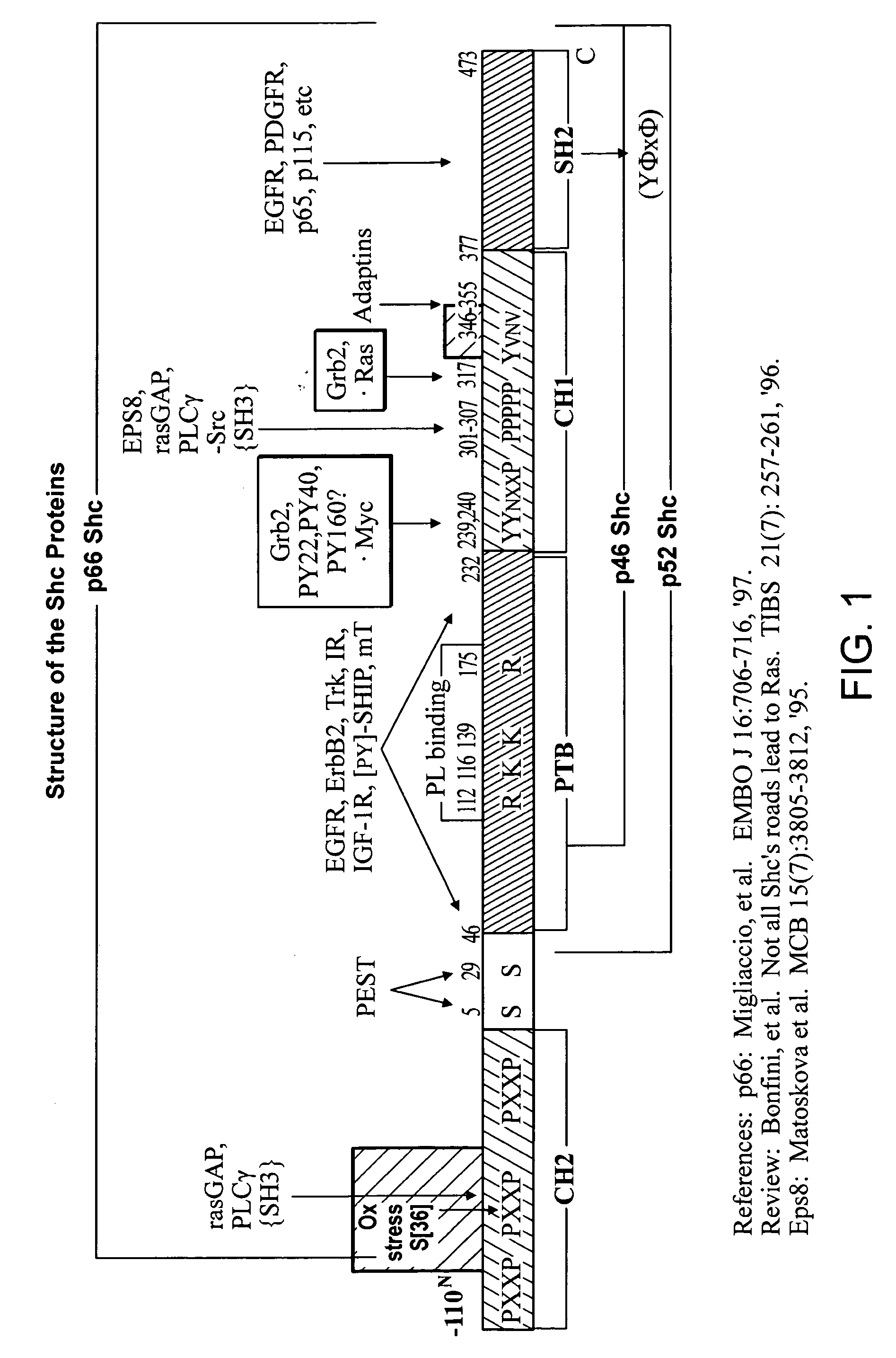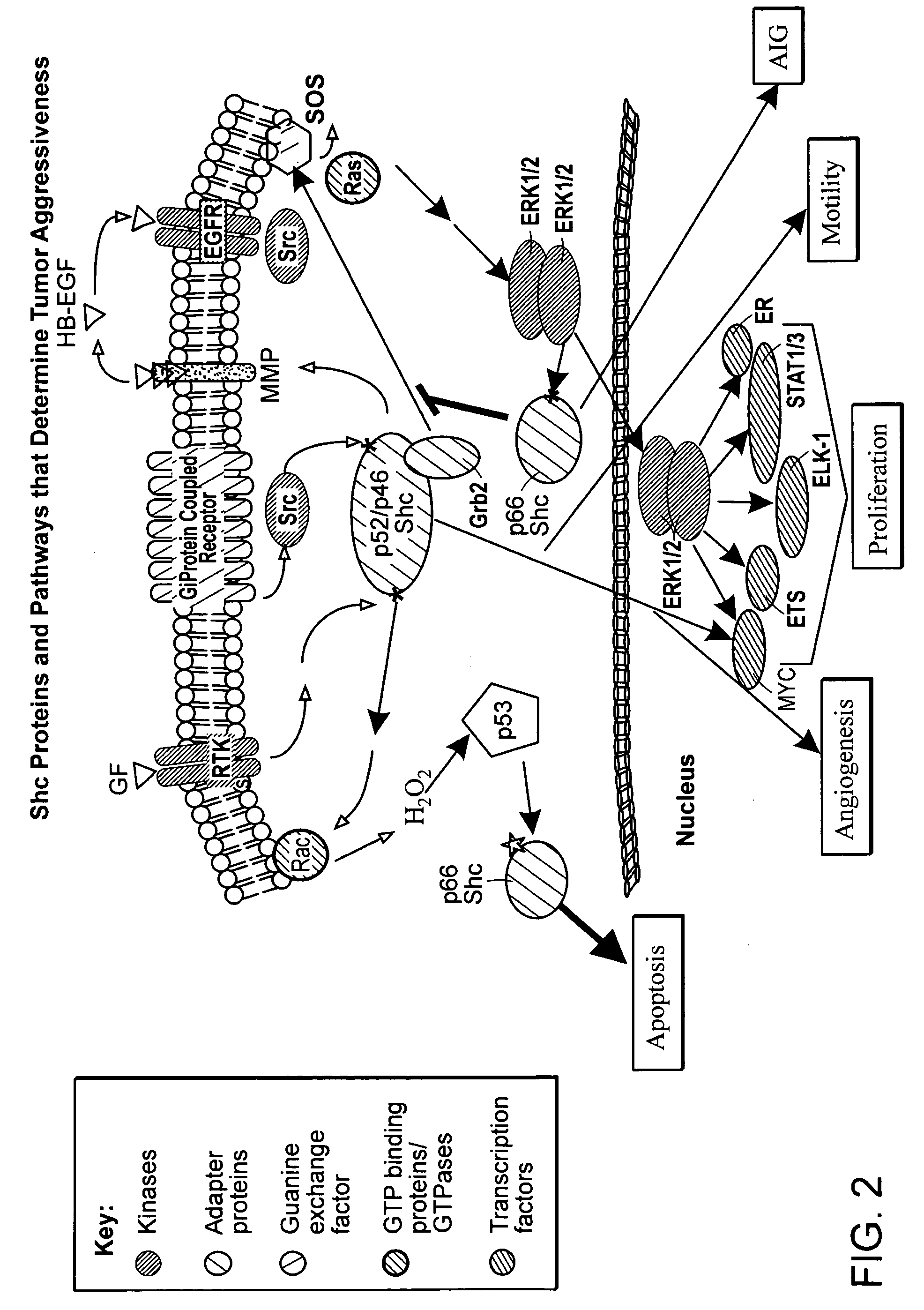SHC protein-related methods and compositions
a protein and protein technology, applied in the field of shc protein-related methods and compositions, can solve the problems that clinical and molecular markers do not adequately identify individuals with cancer
- Summary
- Abstract
- Description
- Claims
- Application Information
AI Technical Summary
Benefits of technology
Problems solved by technology
Method used
Image
Examples
example 1
Shc Proteins in Primary Breast Tumors Predict Outcome in Treatment Naïve, Tamoxifen-Treated and Chemotherapy-Treated Patients
[0059]Background: Better predictors of benefit from adjuvant hormonal or chemotherapy are needed for breast cancer patients. The Shc signaling-adapter proteins, implicated in many pathways associated with aggressive cancers, can be measured in tumor specimens by the immunohistochemical Shc Tes™ that reports activated, tyrosine phosphorylated (PY)-Shc, and an inhibitory form of this protein, p66 Shc. Previous studies indicated that the Shc Test has strong abilities to predict disease outcome. Described herein is the validity of its pure prognostic ability both in naïve patients and patients treated with an adjuvant therapy, and report its ability to identify those patients most likely to benefit from adjuvant tamoxifen or chemotherapies.
[0060]Materials and Methods: Patient samples included primary invasive tumor specimens from 4,326 British Columbian women in T...
example 2
Shc Proteins Predict Outcome in Treatment-Naïve Breast Cancer Patients and Chemotherapy Benefit
[0063]Better predictors of adjuvant chemotherapy would improve clinical management of breast cancer patients. The Shc proteins, implicated in many pathways associated with aggressive cancers, can be measured in tumors by the OncoPlan™ immunohistochemical test, which reports on phosphorylated (PY)-Shc and an inhibitory form of the protein, p66Shc. Previous studies have shown that OncoPlan™ is a strong predictor of disease outcome. Described herein is the ability of p66 Shc to identify those patients most likely to benefit from chemotherapy.
[0064]Methods: Population-based primary invasive tumors from 2380 women from British Columbia (BC) were arrayed in TMA format (no adjuvant therapy=1663; chemotherapy (CMF, AC, FAC, CEF)=717; relapsed=854; died of disease=501; 13 years median follow-up). Shc staining was scored on a continuous 0-5 scale by two pathologists, blinded to patient data.
[0065]Re...
example 3
Proposed Molecular Mechanisms Whereby Tumors Displaying Low p66 Shc are More Sensitive to DNA-Damaging Therapies than Tumors with High p66 Shc Expression
Summary:
[0068]While not wishing to be bound by theory, a tumor evolution model is described wherein oxidative stress and DNA damage provide a major selective pressure for tumors that have low levels of p66 Shc expression, and are aggressive if untreated, but respond well to systemic adjuvant therapy. The model nicely fits the data observations described herein for partitioning of naïve risk and chemotherapeutic benefit realized for patients whose tumors have either low or high levels of p66 Shc. The model makes several additional predictions concerning the distribution of markers for anti-apoptotic and pro-apoptotic factors relative to p66 Shc levels. These predictions were tested using data from the Vancouver General Hospital's 400-patient dataset.
Model:
[0069]Normal cells that are under oxidative stress are programmed to self-destr...
PUM
 Login to View More
Login to View More Abstract
Description
Claims
Application Information
 Login to View More
Login to View More - R&D
- Intellectual Property
- Life Sciences
- Materials
- Tech Scout
- Unparalleled Data Quality
- Higher Quality Content
- 60% Fewer Hallucinations
Browse by: Latest US Patents, China's latest patents, Technical Efficacy Thesaurus, Application Domain, Technology Topic, Popular Technical Reports.
© 2025 PatSnap. All rights reserved.Legal|Privacy policy|Modern Slavery Act Transparency Statement|Sitemap|About US| Contact US: help@patsnap.com



